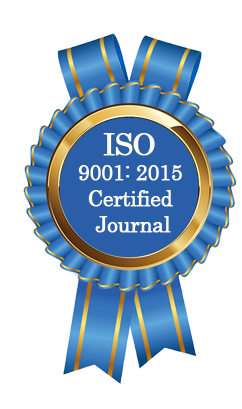| All | Since 2020 | |
| Citation | 105 | 60 |
| h-index | 4 | 4 |
| i10-index | 3 | 2 |
WJAHR Citation 
Login
News & Updation
Best Article Awards
World Journal of Advance Healthcare Research (WJAHR) is giving Best Article Award in every Issue for Best Article and Issue Certificate of Appreciation to the Authors to promote research activity of scholar.
Best Article of current issue
Download Article : Click here
Indexing
Abstract
COMPARATIVE STUDY BETWEEN INTRAMUSCULAR INJECTION AND INTRAVENOUS INFUSION OF OXYTOCIN IN THE THIRD STAGE OF LABOR FOR PPH PROPHYLAXIS
Mariam Barakat*, Raja Rajab and Maisoon Dayoub
ABSTRACT
Background: Postpartum hemorrhage(PPH) is the leading cause of maternal and fetal morbidity. Prophylactic administration of oxytocin reduces the rates of PPH, and various routes are being used but little information is available regarding the best route. Objective: The aim of this study was to investigate the effectiveness of oxytocin infusion versus intramuscular route of drug administration in preventing PPH. In addition to, to determine the safety of oxytocin use in each route. Patients and Methods: This is comparative study was conducted for the period one year (2022 –2023) at Tishreen University Hospital in Lattakia-Syria. The study included 150 women with term pregnancies who underwent vaginal delivery. They were assigned randomly either to group I (90 cases) who received oxytocin intravenously or to group II (60 cases) who received oxytocin intramuscularly. Results: The mean age was 27.11±6.2 years, without significant difference between the two groups regarding demographic and obstetric characteristics (p>0.05). The mean blood loss in group I was (309.8±222.5) vs (345.3±239.2, p:0.1) in group II. PPH was detected in 6 cases (6.7%) in group I versus 5 cases (8.3%) in group II,p:0.8. Hemoglobin and hematocrit decline didn't have significant difference in group I versus group II (0.91±0.2 vs 0.86±0.5, p: 0.2) and (3.11±0.2 vs 3.48±1.7, p:0.6) respectively. The need for blood transfusion and uterotonic agents was in group I versus group II(3.3% vs 5% , p:0.7) and (21.1% vs 26.7%,p:0.2) respectively. Regarding of the side effects: hypotension represented the most frequent complication without significant difference between two groups, p: 0.6. Conclusion: The current study demonstrated favorable results in efficiency and safety with the two routes of oxytocin administration in preventing PPH.
[Full Text Article] [Download Certificate]
